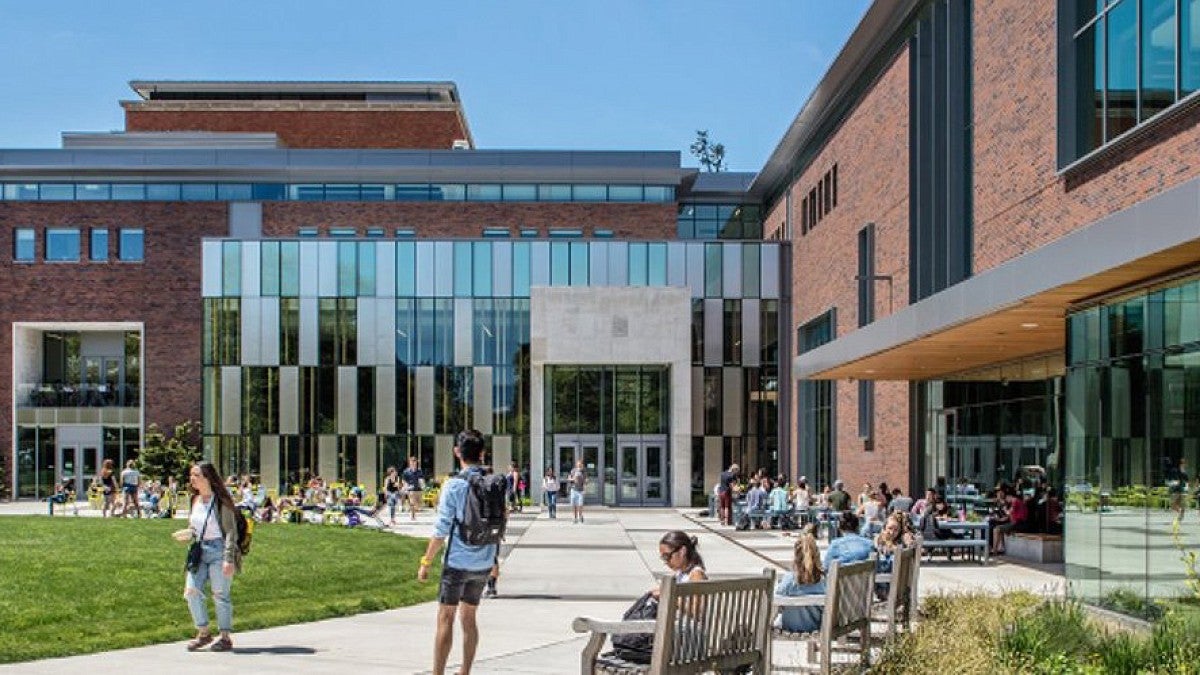For the first time in its history, the International Association for Media and Communication Research is holding its annual conference in the United States — and it’s coming to the University of Oregon.
The UO School of Journalism and Communication will host the event, which features the theme “Reimagining Sustainability: Communication and Media Research in a Changing World,” on the Eugene campus June 20-24. The conference will bring around 1,000 attendees from across the globe to the UO. President Michael Schill will speak at the event, and dozens of UO faculty are lined up to participate.
“We are thrilled that IAMCR gave the UO and the SOJC the opportunity to host its annual intellectual gathering of national and international media and communication scholars,” said Juan-Carlos Molleda, Edwin L. Artzt Dean and professor in the School of Journalism and Communication. “Having so many minds and hearts in one place — inspired by a complex issue with great implications for the well-being of societies around the world — is an encouraging and uplifting event for all involved.”
Registration is still open for the conference, which focuses on moving beyond sustainability and drawing attention to how communication systems — including virtual tools such as social media platforms — consume energy and contribute to pollution and waste.
Goals for the conference include proposing communication methods that can help solve environmental problems. For example, how can journalists explain climate change effects to help the public understand complicated scientific concepts and adjust their behaviors in ways that benefit the environment?
The International Association for Media and Communication Research decided to host its first United States-based conference at the UO because the co-organizers — School of Journalism and Communication faculty members Gabriela Martínez, Christopher Chávez and Jeremy Swartz — made a case that the university, the city of Eugene and the state of Oregon exemplify the conference theme of thinking beyond sustainability.
“Oregon is an ideal place to feature a variety of efforts that work for and promote a more sustainable society and way of life,” Martínez said. “The ‘reimagining’ part of the theme directs attention to the need for broadening and deepening our current understanding of sustainability, pushing the boundaries toward human justice issues and finding ways to help societies not just sustain but thrive.”
The program includes panels such as “Constructing the Good Corporate Citizen: Identity, Social Responsibility, and Global Sustainability,” organized by School of Journalism and Communication professor Pat Curtin; parallel sessions such as “Social Media as a Tool to Identify Urban Segregation and Aggregation,” presented by Department of Architecture professor James Tice; and special sessions including “Reimagining Environmental Sustainability for the Academic Conference,” a panel that includes Swartz.
All UO faculty, staff and students are invited to attend two free events in the Erb Memorial Union. The Ecomedia Arts Festival, beginning at 5:30 p.m. June 21, features an interactive art experience throughout the EMU with new media installations, photography and documentary films focused on contemporary ecological issues in a changing media landscape.
A collaboration with the Jordan Schnitzer Museum of Art, the festival will showcase exhibits such as #CarbonFeed, a physical data representation of virtual and social media. It will also include the work of School of Journalism and Communication alumnus Andy Opel, a 1998 master’s degree graduate who curated the Apalachicola River Project, and selections from the school’s recent Multiverse exhibition.
A second event, Ecofair, takes place throughout the EMU from 9 a.m. to 5 p.m. June 22-23. This business and nonprofit fair gives local organizations that emphasize environmental sustainability the opportunity to share information and display their products for conference attendees and UO community members.
Several campus-based organizations will participate, including the student-produced FLUX and Envision magazines, the Student Sustainability Center and the Multicultural Center. The public can also sign up onsite during the fair for tours of the sustainability features of the EMU, which received its Leadership in Energy and Environmental Design (LEED) platinum certification this year.
Professor Janet Wasko, Knight Chair in Communication Research in the School of Journalism and Communication, is president of the International Association of Media and Communication Research. The association, which was founded in 1957 by the United Nations Educational, Scientific and Cultural Organization, includes members from more than 90 countries.
The research association maintains formal relationships with the United Nations, UNESCO and the U.N. Economic and Social Council.
“It also maintains connections with other media and communication associations around the globe, making this conference a significant site for discussions about communication and media research and its links to issues such as sustainability and human rights,” Wasko said. “IAMCR’s conference will be an exciting opportunity for the University of Oregon to connect with scholars from all over the world and to share our community and our dedication to these issues.”
—By Becky Hoag, School of Journalism and Communication


